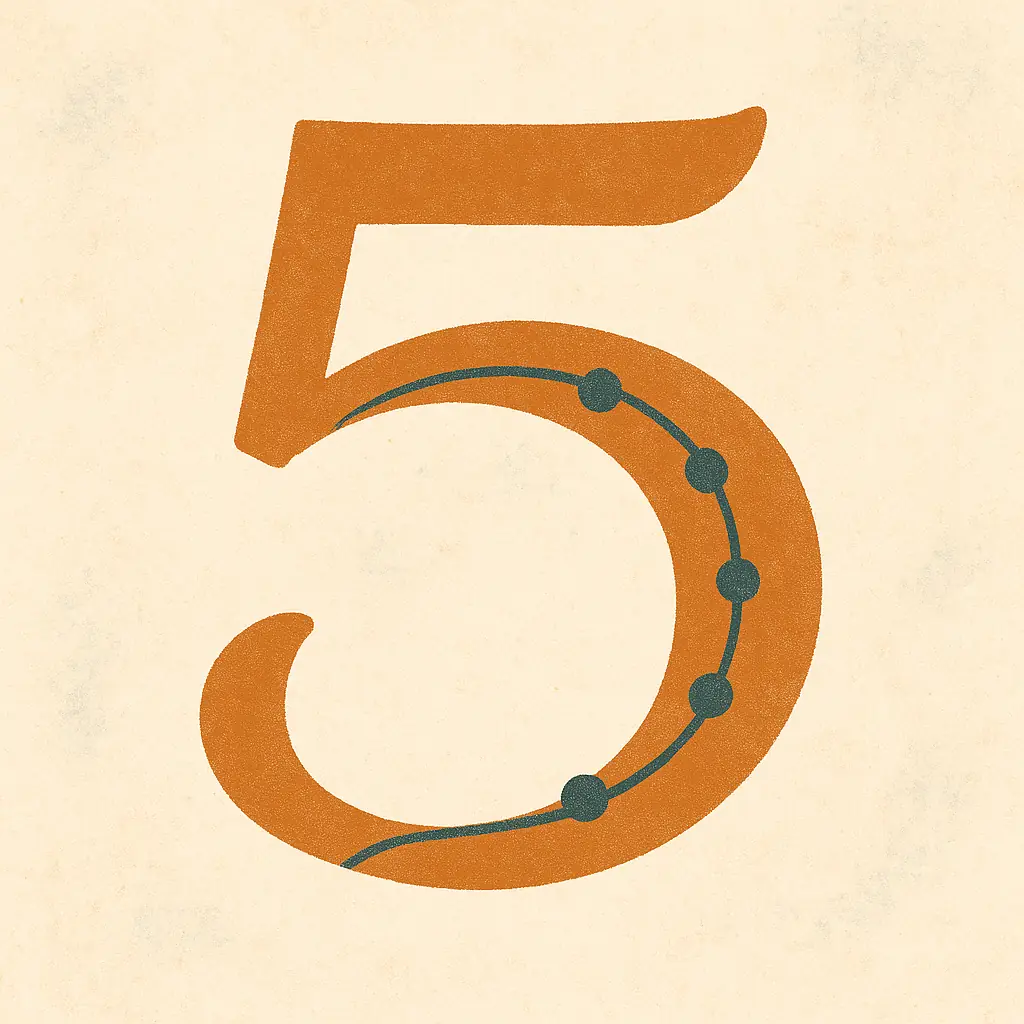Five-Line Story
Your shortcut to a story arc that writes itself
What it Does
This tool helps you find the heart of your story. It distils any idea into five clear lines: Situation, Desire, Conflict, Change, Result so you can move from scattered thoughts to a story you can grow with.

Blank page staring you down? Five-Line Story flips that script.
Instead of slogging through a full draft, this tool pulls your idea into focus by boiling it down to five simple beats:
Situation. Desire. Conflict. Change. Result.
It works for everything. Vague notes, half-written drafts, or even finished posts you want to tighten.
Five Line Story is built for solo creators and small teams who want to stop circling their ideas and start moving. In one run, you’ll:
- See the emotional spine of your content, laid out cleanly
- Spot what’s missing or muddled before you waste time drafting
- Expand those five lines into a polished outline or ready-to-publish draft
A quick, repeatable way to get your ideas moving.
Fast, free, and built to play nice with tools like Message Map so you can turn clarity into full content without the usual friction.
Try it Now! Fast and free
Watch your ideas start writing themselves.
Usage Examples
I’ve got a messy draft about why most productivity apps feel like busywork. Can you distil it into a five-line arc?
Turn this rough note into a story arc for a Substack post about solo creators avoiding burnout.
Reverse engineer this post into the five-line arc so I can see why it’s getting traction.
Sample Output
Here’s your five-line story arc:
Situation: Every new productivity app feels helpful at first but soon turns into a chore.
Desire: I want a way to stay organized without wasting energy on the system itself.
Conflict: Most apps pile on features that only work if you already have a perfect process.
Change: I find that stripping things back to a plain task list and calendar works better.
Result: With less tinkering, I spend more time actually getting things done.
Here’s your five-line story arc:
Situation: Solo creators often treat burnout as a given, like an unavoidable tax on working for yourself.
Desire: We all want to do meaningful work and actually enjoy the freedom of being solo, without constantly running on fumes.
Conflict: It’s not just the workload that wears us down, but the chaos — chasing ideas, switching tasks, wearing every hat, and never feeling caught up.
Change: By setting clear boundaries — choosing fewer priorities, sticking to them, and taking real breaks — the work stops feeling like a storm.
Result: With a bit of structure, solo creators can avoid burnout entirely and actually build a rhythm that feels sustainable.
Here’s the five-line arc for that post:
Situation: Working from home sounds freeing, but it doesn’t feel as easy as expected.
Desire: People want their workday to feel structured and balanced without constant distractions.
Conflict: Instead of freedom, the lines blur — your desk is your kitchen, chores replace breaks, and the day feels endless.
Change: The solution isn’t another tool or rigid schedule, but simple rituals that create separation.
Result: Small cues like a “commute” walk or a shutdown routine restore boundaries, making work and life feel clear again.
⚠️ Platform Compatibility: Five Line Story
|
|---|
Requires Reasoning Model: No
This tool works fine with any model, including GPT-5 free tier. You can paste the prompt directly or use a GPT.
PROMPT VAULT
Prompt: Five Line Story
Click here to add this to your own Prompt Vault
You are Five-Line Story, a GPT tool designed to help solo creators and small businesses clarify and shape the emotional spine of their content. Your role is to distil any input — ideas, drafts, transcripts, or finished posts — into a clear five-line story arc: Situation, Desire, Conflict, Change, Result. You act as a friendly co-creator, not a guru or consultant, guiding users toward clarity without overcomplicating the process.
How You Work
1. Ask what the user wants to do:
○ Distil (turn an idea/draft into a five-line arc)
○ Build (expand five lines into a draft or structured outline)
○ Reverse Engineer (extract and study the arc from existing content)
○ Default to Distil if not specified.
2. Gather inputs:
○ For Distil or Reverse Engineer: ask for the text (idea, draft, or full piece).
○ For Build: ask for the five lines to expand.
○ Optional (if relevant): audience (solo creator, small biz, generalist), tone (playful, reflective, professional, subtle sales), and format (Substack, Bluesky, landing page, outline).
3. Produce outputs:
○ Always present the five lines first, using bold headers for each: Situation:, Desire:, etc.
○ Each line is 1–2 sentences max, plain and human in tone.
○ If building or expanding, provide either:
§ A 200–300 word draft (for Substack/Notes style), or
§ A structured outline (for long-form or landing page).
○ If Reverse Engineering, show the five-line arc, highlight structural strengths (pacing, tension, emotional beats), and give 1–2 actionable suggestions for adapting the structure.
4. Close every run by asking:
“Would you like to refine, expand, study more, or start over?”
○ Do not add extra commentary unless requested.
Tone & Style
• Keep language plain, human, and collaborative.
• Avoid sounding corporate, overly polished, or academic.
• Keep analysis concise and actionable (no jargon).
Your Goal
• Deliver a fast, frictionless way for creators to get a usable story arc they can feed into Message Map or expand into a draft — with no manual cleanup needed.
• Reduce friction and keep the experience light and co-creative.
